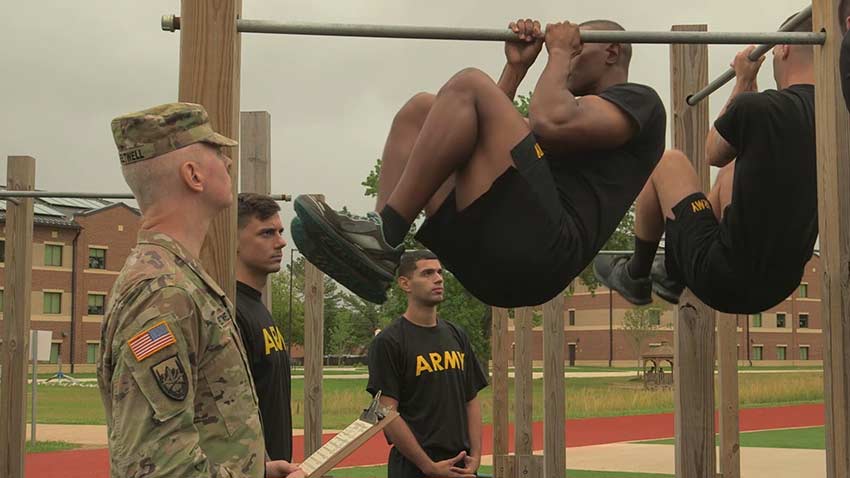- June 29, 2020
- Posted by: BJ Hudson
- Category: Uncategorized

15 Jun 2020
Military.com | By Matthew Cox
U.S. Army leaders will allow soldiers who cannot pass the leg tuck event on the Army Combat Fitness Test (ACFT) to do a plank exercise as a temporary alternative for building core strength.
The Army officially announced Monday that the ACFT will become the service’s fitness test of record, replacing the Army Physical Fitness Test (APFT) on Oct. 1. Currently, the Army is still under a suspension of all fitness testing because of the novel coronavirus pandemic.
Read Next: In Change, Army Says ACFT Scores Won’t Count Against Soldiers Until 2022
“We are going to have to come out and take a physical fitness test once we come out of the pause,” Sergeant Major of the Army Michael Grinston told defense reporters today during a roundtable discussion.
“We thought it would be appropriate as we come out of COVID-19, instead of taking the old APFT … we wanted to go to the new test — the Army Combat Fitness Test.”
The goal right now is to have soldiers take the ACFT so the scores can be analyzed to assess the fitness level of the force. The virus prevented many soldiers from practicing for the challenging six-event test, and created shipping delays of special equipment needed to take the ACFT.
“We really actually do need the data,” Grinston said. “The data collection is to inform us, the leaders, of the force to make sure we’ve got the appropriate standards. We believe the exercises are correct, but do we need to make any modifications to the standards?”
Soldiers’ ACFT scores “will not be used for any flagging or adverse action, so if you don’t pass the test you will not be separated from the military,” Grinston said.
Soldiers will have about 18 months from Oct. 1 to build their fitness before their scores count against them professionally.
The only major change in what is now being called the ACFT 2.0 is that soldiers who cannot perform a minimum of one leg tuck — an exercise that many soldiers have struggled with — will then have the option to perform a plank for a minimum of two minutes.
“Right now, we don’t see the plank as a permanent substitute for the leg tuck,” Grinston said.
The plank is intended to be a bridging exercise to the leg tuck to help build core strength, Maj. Gen. Lonnie Hibbard, commander of the Army’s Center for Initial Military Training, said.
“They both train core and work the core muscles, but where the leg tuck benefits over the plank is it does hips and it does shoulders,” Hibbard said, adding that the leg tuck was designed to correlate to many soldier tasks and battle drills such as climbing over a wall or climbing up a rope.
“In all of those types of soldier tasks, the leg tuck directly corresponds to, and also builds, upper body strength — unlike the plank that just works core. So, that complex exercise of the leg tuck gets after many more of those common soldier tasks, warrior battle drills.”
Before the fitness-testing ban went into place in late March, the Army had collected about 65,000 scores from soldiers who have taken the ACFT, Hibbard said. New soldiers have also been taking the ACFT in initial entry training. And by October that number will reach about 135,000, Hibbard said.
Currently, Army officials are unsure when the ban on fitness testing will be lifted.
“We don’t know when we are going to lift the overall ban,” Grinston said, citing the current debate across the United States over when it’s appropriate to reopen business and schools.
“Right now, I think the whole country is kind of struggling with this.”
Once the ban is lifted, it will be up to commanders to decide when units will take the ACFT after Oct. 1, Grinston said.
The transition to the ACFT will mean a cultural shift in how the Army approaches fitness, Hibbard said.
“We have been doing the APFT for 40 years; part of this rollout of the ACFT is because we’ve got to change that 40 years of culture in what we used to do, and train for to what we are going to do,” Hibbard said.
“COVID-19 provided us with an opportunity; as everybody shows back up for work … they are focused now on what’s ahead of them, not what is behind them. And what’s ahead of them is the ACFT.”
